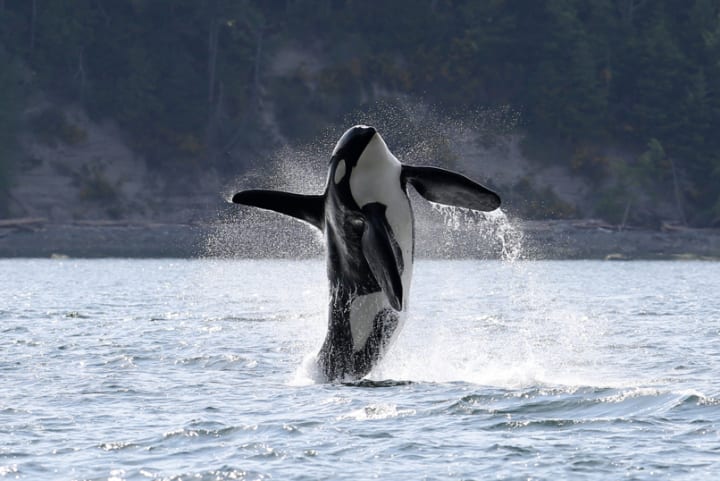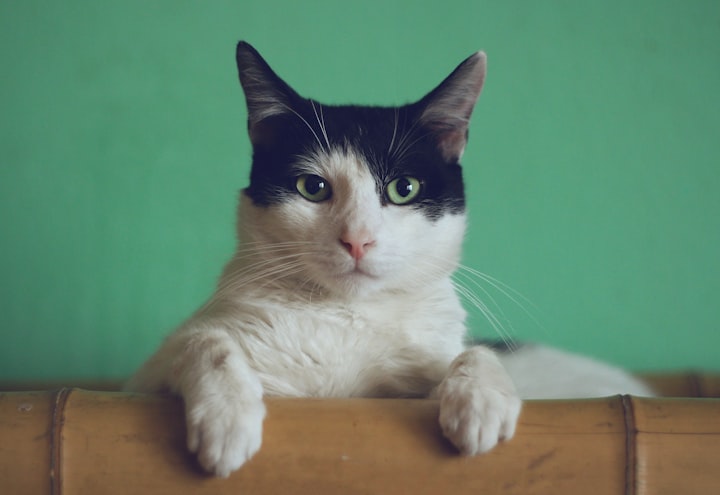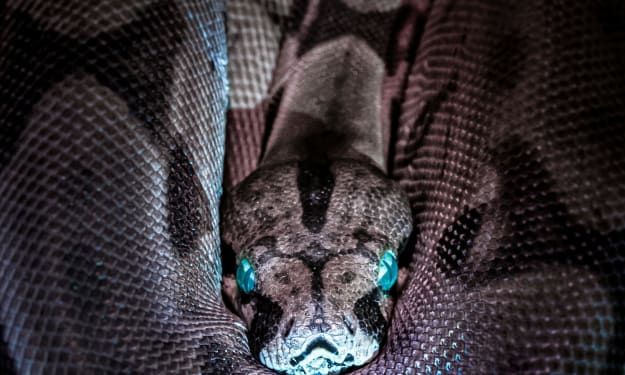Plight in Puget Sound
The story of the Southern Resident Orcas is a tragedy in 3 parts

The plight of the Southern Resident orcas is something very close to my heart. It brings tears to my eyes just writing about the tragedies these animals have suffered.
I've adored orcas most of my life. As a child, I poured over any information about orcas I could get my hands on whether it was anatomy books or picture books. If you wanted useless facts about orcas and other animals, I was your girl.
My mother got me one of those "adopt an animal" kits for an orca when I was five years old and I was ecstatic. The first orca I adopted was J5 Saratoga, the reason mostly being her number, J5, was my first initial plus my age.
I loved getting newsletters in the mail about her and the rest of the Southern Resident Orcas, or J, K, and L Pods, who call the Salish Sea off the coast of Washington State home. I knew many of their names, ID numbers, and saddle patches by heart and was proud of it.
These days I don't keep up with the pods as much as I used to. Rather than just reading about them though, I actually got to see them in the wild when I was in my early twenties. It was a dream come true.
We live closer to Washington now so my family and I vacationed on San Juan Island for about ten years straight. Getting to see my orcas once a year was one of the best things that I've gotten to experience.
If you ever have the chance, you need take a wildlife watching cruise and see the Southern Residents in person.
Sooner rather than later would be best if you want to see them though because the future for the Southern Residents is looking grim.
Some quick orca facts
Before we go further I just want to point out that I never refer to orcas as "killer whales" because they are not whales. Orcas are the largest dolphin.
You can tell females and males apart by the size of their dorsal fin. Males have very tall, straight dorsal fins while females have short, curved dorsal fins.
The saddle patch is located just behind the dorsal fin. It's a white patch that is different looking on every orca and it's how researchers identify individuals.
The Southern Residents are made up of three pods known as J, K, and L Pods and every individual has a number and a name. They are a subspecies of orca that eat a specific diet of Chinook Salmon and nothing else, unlike other species of orca known as transients that eat mammals and sharks.

A dreadful past
One of the most infamous cetacean captures took place in Washington State in 1970. Over eighty Southern Resident orcas were rounded up into Penn Cove. As many as five animals died and seven were taken into captivity.
This was the catalyst that would send the salmon-eating orca subspecies into an unrecoverable downward spiral.
The capture was so traumatic that the Southern Residents have never gone anywhere near Penn Cove again.
One of the orcas from the 1970 capture remains alive, performing tricks at a small sea themed park in Florida to this day. In fact, she is the last surviving orca of the forty five Southern Residents that were taken from the Salish Sea off the coast of Washington during the 1960's and 70's.
You read that right. Forty five animals, mostly babies, were taken from their families in the span of twenty years and sold in the rapidly growing marine animal trade of the time.
This action permanently stunted the ability of these orcas to survive. They very nearly were driven to functional extinction in the 70's.
Their numbers have been on a steady decline ever since and as of 2020 there are 74 Southern Resident orcas left. Functional extinction is exactly what they're facing right now.

A lack of sustainable food
For the past decade or more, the Southern Residents have had to deal with the added stress of a depleting food source.
The Chinook Salmon population is declining and this fish has even been placed on the Endangered Species list. The Southern Residents only eat Chinook Salmon so if there are no Chinook for them to eat, they go hungry.
Washington's lower four Snake River Dams prevent the Salmon from migrating to and from their spawning grounds. Despite knowing this, the government refuses to do anything about it and they continue to allow Salmon Farms in the area. Salmon Farms are detrimental to the already dwindling Chinook Salmon population as they spread disease throughout the waterways.
By saving the Chinook Salmon, it would be one less problem the orcas have to deal with in their struggle to thrive.
Pollution and climate change
High levels of toxins have been found in the bodies of dead marine life that have washed ashore. The Southern Resident Orcas are no exception.
Pollution in our oceans effects these orcas a great deal. Late stage birth failures are the biggest of these issues. It also makes the mother's milk toxic which makes the babies sick. This is probably why births within the Southern Resident community have dwindled in recent years, often going stretches of years with no births at all.
Noise pollution is a problem too. Noise created by ships and other vessels interferes with communication between members of the pods.
Climate change is effecting the temperature of the water in the Salish Sea. In the past decade the Southern Residents have been leaving their home waters for months at a time and researchers aren't sure why or where they go. It could be because of climate change or because they are searching for food or a combination of reasons.
We need to take more care in how we're effecting our oceans and the important creatures that make up its vital ecosystem.

We are killing them
Vessel strikes have been the leading cause of death for orcas, especially in the past few years.
The amount of ship traffic going through their habitat is outrageous. It makes it difficult for the orcas to hunt for food and travel, needing to avoid vessels almost constantly.
Action and drastic measures need to be taken quickly or we could soon lose these important and beloved animals.
It may already be too late to save them.
About the Creator
Xennariel Revenlyr
Writer. Wannabe artist. Gamer. Animal lover. Lover of all things fantasy. My dogs Zephyr and Maverick are my life.






Comments
There are no comments for this story
Be the first to respond and start the conversation.